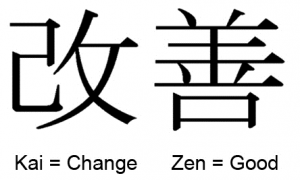
The Lean East team uses proven principles and tools of continuous improvement to support organizational change. The Toyota Motor Corporation developed many of these Lean continuous improvement principles, and one of the core principles of their Toyota Production System (TPS) is “Kaizen.”
Kaizen
Kaizen is a Japanese word that translates to “change for the good” which results from making many tiny improvements to a system or process. The accumulated improvements eventually lead to significant results.
Kaizen applies to individuals in the same way it applies to organizations. Many small, repeated gains add up to a significant change; this is the “compound effect” at work. Most of us are too busy to take four weeks off from work to learn a language, but we could easily make time for one 5-minute lesson per day. Personally, I have spent 5-minutes per day over the past 6 years (the equivalent of ~180 hours!) learning a language.
I have read numerous books on the topic of personal improvement and experimented with many processes and techniques. Now, I am sharing some simple steps I have found to work for myself and others, with you. Read on to learn the Lean East approach to developing new habits for Personal Kaizen.
Objectives
The first step in Personal Kaizen is determining your improvement objectives. In what areas of your life do you want to improve? Why? What are the key results you are targeting?
Lean East covered setting objectives in this post. For this post about habits, we will select an example many readers can relate to:
“to return to my college weight by the end of the year.”
Behaviors
Once you have determined your objective, the next step is to identify and rank your current behaviors that are contributing (or not contributing) towards your objective.
Lean East uses a combination of process tools and data analysis to review the current state. For Personal Kaizen, I recommend this three-step process:
- First, begin with a simple brainstorming session identifying behaviors that would support your objective. Write these behaviors (at least 10-15, wacky or not) on post-it notes. If you are thick-skinned, ask a friend or loved one for their input.
Remember that these are behaviors (actions) and not outcomes or aspirations. See the example behaviors on the post-it notes below.
- Then, place each post-it note behavior on a PICK chart, with your rating in the dimensions of Effort and Impact. See the example below.
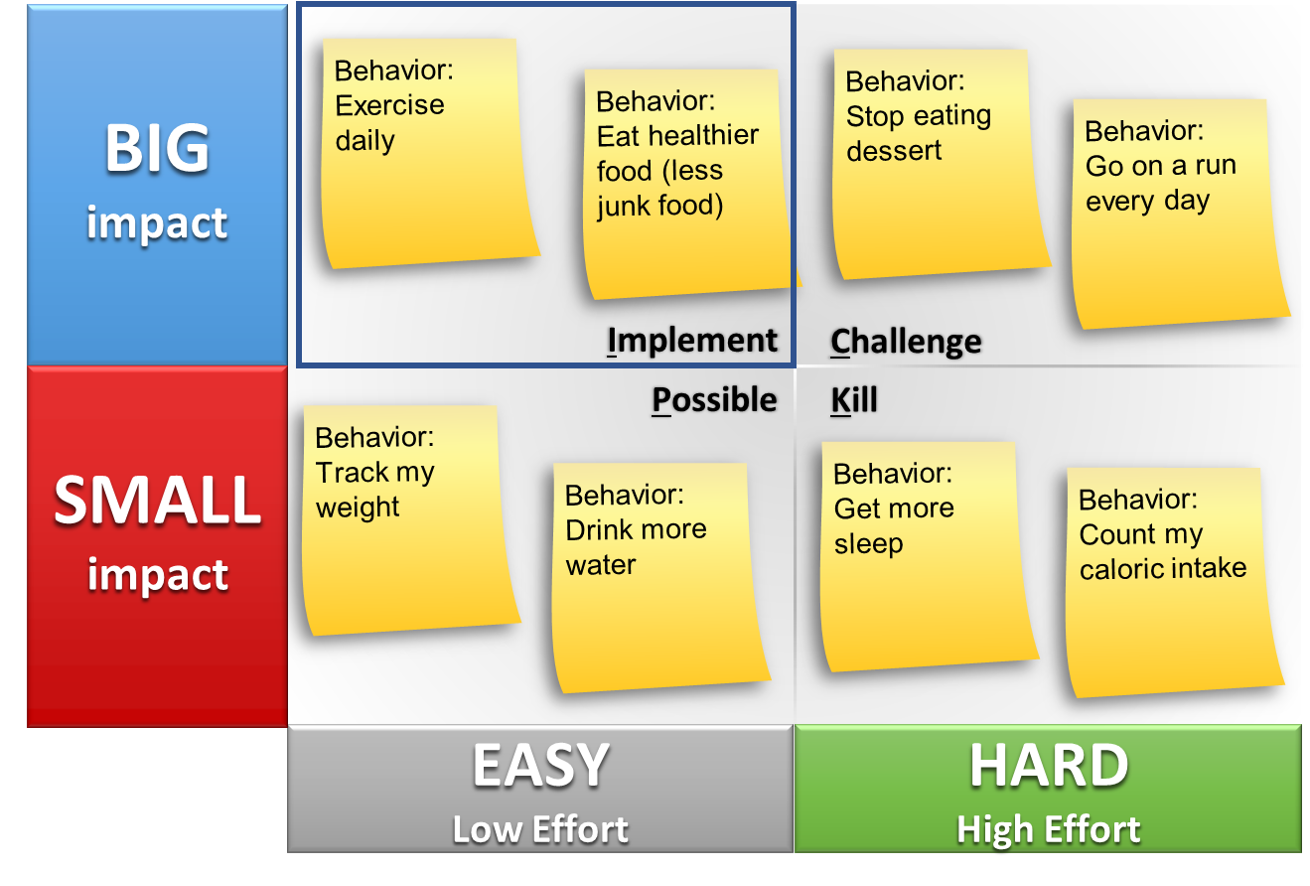
A tip on rating your behaviors:
- For impact ask: “How effective is this behavior in meeting my objective?” Make your best guess and if you find out later you were wrong, then you can adjust.
- For effort ask: “Can I get myself to do this?” Be honest, as it doesn’t help if you lie to yourself.
- Finally, select 3 to 4 behaviors from the “Implement” quadrant (big impact, easy to do) first and then the “Possible” quadrant second. Pick only 3 to 4 and ignore the behaviors in the other quadrants. We will design a plan to turn these behaviors into habits.
The four behaviors we selected from the PICK chart above are:
- Exercise daily
- Eat better food (less junk food)
- Track my weight
- Drink more water
The 3 to 4 behaviors you selected from the PICK chart are going to be the most impactful in meeting your objective. You are going to make these behaviors into habits by following our three-step process.
Simplify the Behavior
The first step is to make the behavior easier and simpler for you to do. There are three approaches:
- Increase your skills: For example, buy a book about “How to Eat” or research simple exercise routines that will build strength and reduce your weight.
- Use tools and resources: An example of this would be to buy a digital scale that outputs the data to a smartphone or buy a nice reusable water bottle.
- Make the behavior smaller and easier: Once you have increased your skills and used tools and resources, look to simplify each behavior. Here are some ways to simplify the “Drink more water” behavior:
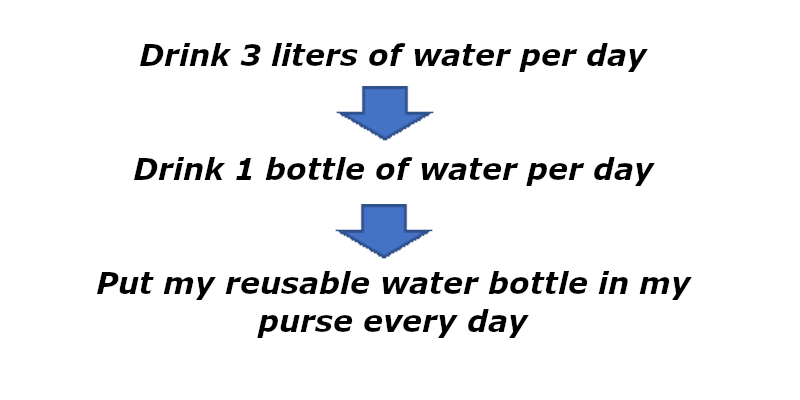
Anchor
An Anchor is an existing routine or event you will use to remind you to do your simplified behavior above. This is one of the keys to turning your desired behavior into a habit.
I suggest linking your anchor with your behavior into a Habit Statement. Here are a few examples:
- When I put my wallet in my purse, I will add my reusable water bottle.
- While I wait for my shower water to warm up, I will weigh myself.
- While I brush my teeth in the evening, I will record my exercise for the day.
- When I park my car at work (or the store), I will park in the back lot so I have a longer walk to the front door.
Celebration
The other key to developing a habit is linking the completion of the behavior to a positive emotion.

Celebrate after you complete your simple new behavior. This will release hormones in your brain to “wire in” the new habit. Don’t be tempted to skip this step as I was – it really works! Here are several examples of celebrations you can use:
- Say “yes!” out loud
- Smile
- Do a fist pump in the air
- Say or think, “Good job!”
- Do your own version of a “happy dance”
My favorite celebration is to check off that I completed the behavior. This lets me see the progress and makes me want to continue the behavior so I don’t break the chain. The language learning App DuoLingo helps do this for you, as shown to the right.
Habits in Action
Here are some examples of Habit Statements. Feel free to copy them, or adapt them so they work for you. Note how each habit has an anchor, a simple step, and a way to celebrate and lock in the habit.
- When I brush my teeth at night, I check off my health successes for the day. If I haven’t done pushups already, I will do at least one pushup so I don’t break the chain.
- If I need to leave for work early the next morning, I will prep a healthy bowl of oatmeal for breakfast the night before.
- When I plan to exercise the next day, I will put out exercise clothes the night before and put them on when I wake up.
Habits take some time to develop, so make sure you keep them small and simple! For example, it is better to set the goal of a single push-up. Many days you will feel good and do more, but if you are extra tired at least you can do your one, not break the chain, and feel successful.
You should also experiment with anchors until you find ones that work for you. Use simple tools and reminders. For example, if my new habit is to: “Stretch on the floor for one minute when I turn on the TV” it is helpful to add a sticker on the remote control that reminds me to do this.
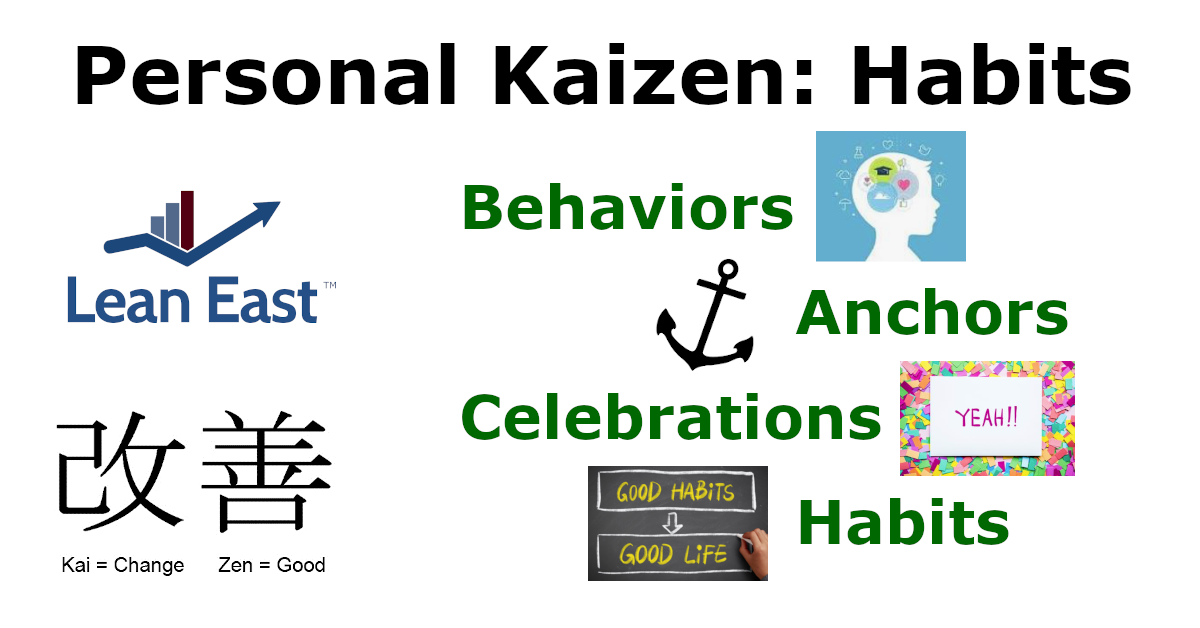
More Personal Kaizen
Lean East will cover additional personal kaizen topics in future posts.
Please share your comments about habits and personal change below. If you have a good habit example to share please let us know your anchor, behavior, and means of celebration below.




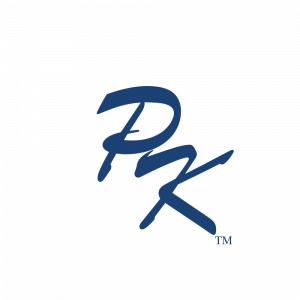

Thanks. Very helpful.
Un hábito excelente que me gustaría compartirles es poner un recordatorio en la agenda del Cel. De Outlook o GmailCalendar, en una hora específica en la que previamente hayamos analizado en la que normalmente tengamos como espacio libre para practicar alguna nueva herramienta (si queremos mejorar nuestras aptitudes en nuestro trabajo profesional), una nueva habilidad, idioma etc.
Me ha servido bastante, puesto que me permite hacer ajustes y el cel. Me recuerda lo que quiero hacer en determinada hora y día.
Excelente día. Saludos! 🙌🏼 😀
Luis
Saludos!
Using your calendar to schedule your priorities is smart. I do this daily, and even have reminders that are scheduled for every week so I don’t schedule things over them.
Thanks,
Steve